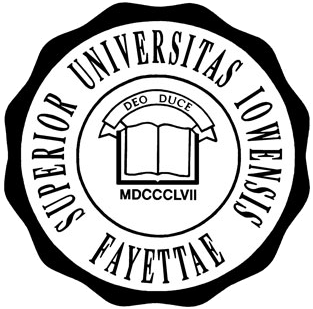
Upper Iowa University (UIU) is a private university in Fayette, Iowa. It enrolls around 3000 students and offers distance education programs that include centers in the U.S., an online program, an independent study program, and formerly had centers in Hong Kong, Singapore and Malaysia. UIU has a total student enrollment of more than 3,000 students.

Hiram College is a private liberal arts college in Hiram, Ohio. It was founded in 1850 as the Western Reserve Eclectic Institute by Amos Sutton Hayden and other members of the Disciples of Christ Church. The college is nonsectarian and coeducational. It is accredited by the Higher Learning Commission. Among its alumni is James A. Garfield, who also served as a college instructor and principal before he was President of the United States.

Rose–Hulman Institute of Technology (RHIT) is a private university in Terre Haute, Indiana. Founded in 1874 in Terre Haute, Rose–Hulman is one of the United States's few undergraduate-focused engineering and technology universities. Though it started with only three bachelor's degree programs, Rose–Hulman has since grown to twelve academic departments with over thirty undergraduate and graduate degree programs in science, engineering, technology, and engineering management, leading to bachelor's and master's degrees.

Crawfordsville is a city in Montgomery County in west central Indiana, United States, 49 miles (79 km) west by northwest of Indianapolis. As of the 2020 census, the city had a population of 16,306. The city is the county seat of Montgomery County, the only chartered city and the largest populated place in the county. It is the principal city of the Crawfordsville, IN Micropolitan Statistical Area, which encompasses all of Montgomery County. The city is also part of the Indianapolis–Carmel–Muncie, IN Combined Statistical Area.
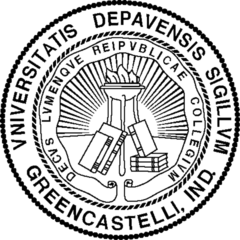
DePauw University is a private liberal arts college in Greencastle, Indiana. It was founded in 1837 as Indiana Asbury University and changed its name to DePauw University in 1884. The college has a Methodist heritage and was founded to be an ecumenical institution of national stature, "conducted on the most liberal principles, accessible to all religious denominations and designed for the benefit of our citizens in general".

Anderson University is a private Christian university in Anderson, Indiana. It is affiliated with the Church of God. The university offers more than 60 undergraduate majors as well as graduate programs in business, music, and theology.
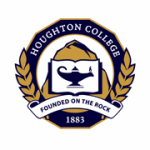
Houghton University is a private Christian liberal arts college in Houghton, New York. Houghton was founded in 1883 by Willard J. Houghton and is affiliated with the Wesleyan Church. Houghton serves roughly 1000 students and has 54 degree majors for primarily undergraduate students.
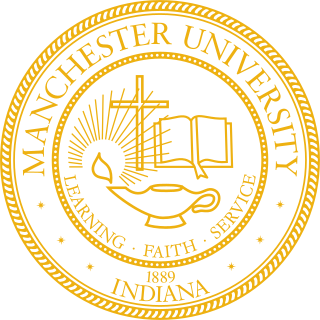
Manchester University is a private liberal arts university associated with the Church of the Brethren and two locations, a residential campus in North Manchester, Indiana, and a second location in Fort Wayne, Indiana, which hosts the university's doctorate programs in pharmacy; master's programs in pharmacogenomics, athletic training, and nutrition and nutrigenomics; and an accelerated second degree program in nursing. Total enrollment is approximately 1,200 students.

Andover Theological Seminary (1807–1965) was a Congregationalist seminary founded in 1807 and originally located in Andover, Massachusetts on the campus of Phillips Academy.

Transylvania University is a private university in Lexington, Kentucky, United States. It was founded in 1780 and is the oldest university in Kentucky. It offers 46 major programs, as well as dual-degree engineering programs, and is accredited by the Southern Association of Colleges and Schools. Its medical program has graduated 8,000 physicians since 1859.

Butler University is a private university in Indianapolis, Indiana. Founded in 1855 and named after founder Ovid Butler, the university has over 60 major academic fields of study in six colleges: the Lacy School of Business, College of Communication, College of Education, College of Liberal Arts and Sciences, College of Pharmacy and Health Sciences, and Jordan College of the Arts. Its 295-acre (119 ha) campus is approximately five miles (8.0 km) from downtown Indianapolis.
Hanover College is a private college in Hanover, Indiana, affiliated with the Presbyterian Church (USA). Founded in 1827 by Reverend John Finley Crowe, it is Indiana's oldest private college. The Hanover athletic teams participate in the NCAA Division III as a member of the Heartland Collegiate Athletic Conference. Hanover alumni are known as Hanoverians.
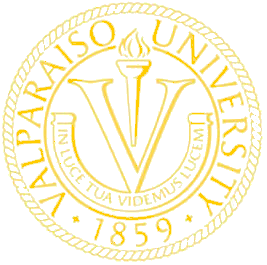
Valparaiso University (Valpo) is a private university in Valparaiso, Indiana. It is an independent Lutheran university with five undergraduate colleges and a graduate school. It enrolls nearly 2,300 students and has a 350-acre (140 ha) campus.
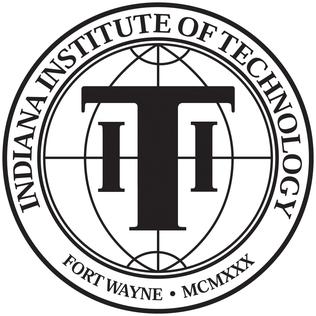
Indiana Institute of Technology is a private university in Fort Wayne, Indiana. It was founded in 1930 as Indiana Technical College by John A. Kalbfleisch, who was also the school's first president.

Roosevelt University is a private university with campuses in Chicago and Schaumburg, Illinois. Founded in 1945, the university was named in honor of United States President Franklin Delano Roosevelt and First Lady Eleanor Roosevelt. The university enrolls around 4,000 students between its undergraduate and graduate programs. Roosevelt is home to the Chicago College of Performing Arts.

Holy Cross College is a private, Catholic, co-educational, residential institution of higher education administered by members of the Congregation of Holy Cross in Notre Dame, Indiana. The college was founded by the Holy Cross Brothers in 1966.

Caleb Mills was an American educator who served as the Superintendent of Public Instruction in Indiana and was the first faculty member at Wabash College. He played a central role in designing the public education system of Indiana.

John Lockwood Wilson was an American lawyer and politician from the U.S. states of Indiana and Washington. He served in the U.S. House of Representatives (1889–1895) and U.S. Senate (1895–1899)

The Wabash Little Giants are the intercollegiate athletics teams that represent Wabash College, a small private school for men in Crawfordsville, Indiana, United States. The college belongs to the National Collegiate Athletic Association and participates in Division III sports. The Little Giants compete as members of the North Coast Athletic Conference (NCAC). Despite the college's small enrollment and that it is "not a jock school", the Little Giants have had success in several sports. The most popular among Wabash fans are football and swimming. The Little Giants also have a well-respected cross-country team. In football, Wabash has an important rivalry with DePauw University, and each season they meet for the Monon Bell Classic. Wabash and DePauw compete annually to win the trophy, the Monon Bell, and as of 2015 the two teams have played 122 games in the series with Wabash holding a 60-53-9 advantage.

Gregory D. Hess is an American economist, business executive, and former academic administrator. Hess served as Professor of Economics, Dean of the Faculty, and Vice President of Academic Affairs at Claremont McKenna College, prior to his appointment as the 16th President of Wabash College. Hess now serves as President and CEO of IES Abroad.






















